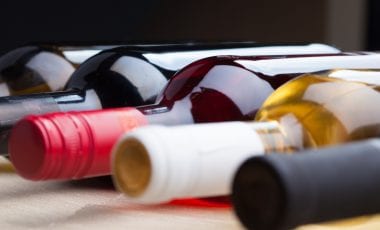Rosé is definitely on trend, and all the more during the summer months of course. But, what exactly is rosé wine and how is it produced?
Popular just about everywhere: from wine bars, restaurants, bistros, summer terraces to lively garden soirees and, of course, at home – the “pink” stuff can usually be found in any wine collection. And, it’s easy to see why: if you’re looking for a refreshing all-rounder that’s a lighter and more convivial alternative to red wine, it’s hard to beat rosé wine.
How is a rosé wine actually made?
It’s a fairly common assumption that rosé wine is simply a blend of white and red wine, made from pressing white and blue grapes together. But things aren’t as straightforward as that. In fact, winemakers aren’t actually allowed to make it that way – not if the wine is to be labelled as rosé.
Rosé wine: dispelling the myths
It’s a surprise to many that rosé wine is, in fact, made exclusively from the same blue grapes that red wines are made from. These blue grapes almost always have a light, often colourless juice and so the obvious question arises: Where does the red colour come from, then? Well, this is easily answered because the blue and red pigments are derived from the grape skins not the juice.
Now, in order to understand the rosé winemaking process, we must first take a closer look at red and white wine production. In red wine production the grape skins are simply fermented together with the juice and, in the process, they release their colour. This is called a “mash” fermentation. On the other hand, during white wine production only the grape juice is fermented in a process known as “must” fermentation.
The release of the pigments from the mash during red winemaking typically occurs over a few weeks and, if this process is interrupted after just a few hours, only a little colouring will have been released from the grape skins. The rosé winemaker takes advantage of this and assumes total control over the colour of the wine. Once the juice has taken on a slight red hue, it is pressed and transferred to another tank where it continues to ferment without the skins; it will eventually be bottled as rosé wine. So, in the strict sense, rosé wines are fermented red wines that have had only minimal contact with the grape skins.

Can rosé be a blend of red and white wine?
The simple answer is yes, it can. This mixing method, whereby a little red wine is added to a vat of white wine, does exist. Pink-coloured wines are made using this blending technique, but the resultant wines cannot be labelled as a rosé. In Liebherr’s founding land of Germany, such pink wines are known as “Rotling” wines, and famous examples include Schillerwein (a speciality from Württemberg) and Rotgold (from Baden).
However, there is one exception to this rule, and that’s rosé champagne. With champagne, the description ‘rosé’ can be applied even if the wine is derived from a blend of red and white wines. Certainly, many rosé champagnes have been produced exclusively from white Chardonnay grapes with a small percentage of red wine added for colouring, and to round off the taste. Having said that, some high-end producers still favour a process that’s based on grape skin contact for their rosé champagne.
What temperature should rosé wine be served at?
7°C is the right temperature for simple rosé wines that have a residual sweetness. For more complex and premium quality rosé wines you should ideally raise the serving temperature by a degree or two. Read our article on what temperature to serve wine for more.
We hope you enjoyed this article. Please feel free to share it across social media… We’re on Facebook, Instagram, Twitter and Pinterest.






